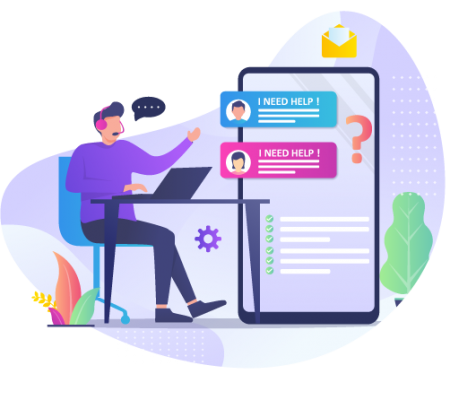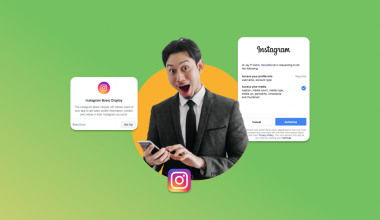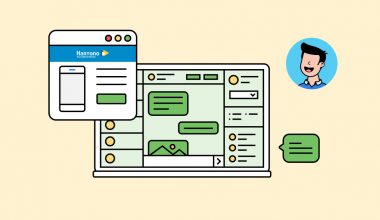Since the beginning of time, humans have always looked for better and convenient ways to communicate and connect with each other. Today, billions of people use social media and instant messaging platforms, not only to interact with their communities but also to connect with businesses and brands.
However, nowadays, even if a company has a website, call center or even a live chat feature on their website to address their customers’ concerns, social media platforms are still preferred by people who want to connect with their brand or company. Businesses should be aware that solely focusing on the live chat feature is not going to be beneficial for them. Customers would use whatever channel they want to contact businesses and brands. If your customers are active on multiple social media channels, as a business you should be, too.
Here are 5 reasons why using only a live chat feature on your website will not be optimal for your business:
1) You are not reaching out to where your customers are
With the increasing numbers of users interacting via social media channels and instant messaging apps, expecting your customers to go onto your website to use your live chat feature is not an effective way to maintain great customer experience. The enormous number of social media and messaging apps users could be a big opportunity for brands and businesses to gain more customers by reaching out to them on their most preferable channels. A quick, simple, and real-time accessibility for both companies and customers is the key to a business’ success. Your customers want to contact you whenever and however they want.
2) Switching between live chat, email, and call is ineffective
Typically, if customers do not get fast enough responses, they will leave the site. How then can you provide solutions to their problems, when you can’t even communicate with them? You can only hope that the phone numbers or email addresses they gave are valid so that you can call or email them to follow up on them. Not only this method is outdated, but it is also ineffective.
Customers demand fast responses from your company using the channel they prefer. 56% of customers prefer to chat and not make or receive calls. Making them switch to other channels like email or trying to follow-up on the conversation via call is cumbersome. 64% of consumers say that they expect companies to respond to them in real time. That’s why you have to make it as easy as possible for people to get in touch with you.
3) Using live chat from a mobile browser is not optimal
We are living in a mobile-first world. Everything is done via mobile phones. Chatting on live chat via mobile browser is no longer preferable. It is not seamless to share documents, screenshots, and even to open live chat from a mobile browser, which is not as simple as opening a WhatsApp. Other than that, the live chat feature uses cookies to save your session history, therefore once you clear your history or restart your sessions, your previous conversation will be gone.
4) Two-way interactions on live chat stops when the customer exits
In today’s world, businesses can no longer compete based on features, product offerings, and pricing. One of the most important differentiating factors is the experience of how brands are able to add a sense of ‘personal touch’ or personalisation into their interactions with customers. This is especially true for the millennials.
Therefore, there is a need for businesses to find ways to sustain the conversation or engagement with their customers. When the conversations end, the customers or your representatives should be able to revive the conversations and sustain the engagements with full context of past conversations.
5) Customers do not realize that there is a new message
How many devices do you have? Two? Three? More than 40% online adults are multi-device users. Customers now switch between devices very quickly and instantly. Understanding this, almost all mainstream communication apps have real-time sync mobile and web applications. Notifications are received both on the web and on the mobile app. This is crucial to ensure that the conversations do not get cut off.
Imagine this. Customers send you a chat via web browser and while waiting for your response, they switch to their other windows or stop working on their laptop and chat using their mobile phone instead. They forget about the chat with your business. They only realize this a few minutes later and by the time they return to their web browser, the chat session has been closed and they must restart the session.
The best way to make customer support more convenient for customers is to offer support on several different channels. If you don’t, you could lose potential buyers, which means you’ll lose sales and revenue. Salesforce’s report reveals that 73% of consumers and 78% of business buyers are very likely to switch brands if they receive an inconvenient service experience.
Providing multichannel customer service to meet your customers’ expectations
Customers spend more time on mainstream chat apps throughout their day for multiple purposes. According to a report from We Are Social in 2018, on average, Indonesians spent at least three and a half hours on social media in a day, this was the top three highest worldwide. WhatsApp as the most popular messaging app has 1.3 billion users around the world, and if combined with all other instant messaging apps, it would be over 2.5 billion users worldwide. Despite the lack of internet penetration, Indonesia’s social and messaging apps users were growing to 23% from 2017 to 2018. On average, an Indonesian consumer installs around 4.2 chat apps, like WhatsApp, Line, Facebook Messenger, and Telegram.
Multichannel customer service is a way of providing customers with options on how they would like to communicate with businesses and brands if they have an inquiry or a complaint to make. Customers can choose to get the help they need from their own preferred channel. , This increases the convenience of reaching out to your business and does contribute to better customer satisfaction.
How to leverage social media and messaging apps to serve as multichannel customer service
It has become the new normal now for businesses to embrace this change and adjust the way they reach their customers and establish multiple channels where customers can easily reach them. As stated above, relying solely on live chat is not relevant anymore in this social media and instant messaging world.
Services like WhatsApp Business, Telegram, Line Official, Facebook Messenger, and many other apps are making the transformation to multiple channels approach to be easily implemented. Businesses are able to have a fully-branded identity by utilizing those tools to give a great way to sustain intimate interactions with customers. Instead of depending on one single channel, now customers can reach businesses from whatever channels they prefer, including a live chat on their websites.
However, there is a risk in implementing multichannel customer service chats if the customer support team cannot deliver consistent quality service in each platform. Customers who are satisfied with the customer service delivery of a channel will expect the other channels to deliver an equally high-quality customer service as well.
Now the challenge is, how can businesses manage all those numerous channels effectively and seamlessly? Well, maintaining and answering thousands or even millions of customers’ complaints and inquiries would be a daunting task.
However, surely this should not be a hindrance for businesses to adopt a multichannel approach.
Thanks to today’s technology, maintaining the quality of a business’ chat service in multiple channels is not that difficult anymore. There are many tools that companies can use to maximally harness the benefits of an integrated chat service. Qiscus, a local SDK chat provider, has just launched one of their products that can help businesses to integrate their customer service chat platforms, including Line, Telegram, Facebook Messenger, WhatsApp, and web live chat into a single dashboard, making service management and monitoring easier for the customer support team.
Qiscus provides a centralized dashboard where messages from the different channels can be easily and seamlessly responded to. New messages that come in will be auto-allocated to an available agent, who will then handle the conversations with the customers from within the dashboard itself. Once the conversation ends, the agent is able to revisit the chat room and re-engage the customer through pushed messages. Best of all, the two-way conversations never ends, giving businesses a chance to sustain their customer engagements and therefore, provide a differentiated experience to their customers.



